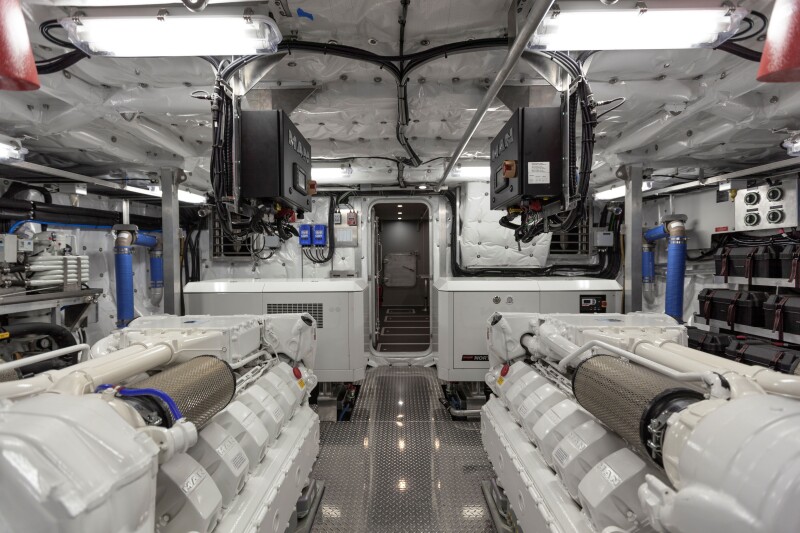Greg Sanborn at Billings Marine in Stonington, Maine, has overseen many of the Maine Clean Marine Engine Program-supported fishing vessel repowering projects. “It’s slowing down some now,” says Sanborn. “We’ve gotten most of the dirty engines out of the fleet.”
According to Sanborn, the repowers supported by the Maine program and new builds have been Tier III. Still, he has had some discussions with fishermen who are considering going to Tier IV. “We’ve talked about it. I’ve got a MAN V12 on the floor here, ready to go into a new Marine Patrol boat. The thing is, nobody wants to be the guinea pig on Tier IV, so the Marine Patrol boat is going to be the guinea pig.”
While MAN offers the most compact Tier IV after-treatment system, Sanborn notes that it would need to be installed in a bigger boat. “It would have to be a Wesmac 48 at least, or a Mussel Ridge. You’re not going to get it into a 42.”

In April 2024, MAN announced that its V-12 engine line would meet even these more stringent standards, and when fishermen are ready for Tier IV, MAN says it’s ready. According to Josefine Hollingsworth, sales manager for marine engines at MAN Engines and Components, when fishermen are ready for Tier IV, MAN is ready. “We brought the V12 Tier IV to the Maine Fishermen’s Forum in early March of 2024,” she says. “We were hoping to generate some interest. We did, but it mostly consisted of questions about issues they’d heard about. They’re hesitant.”
The EPA regulatory relief that allowed some boat builders to install Tier III engines over 800 horsepower into certain types of vessels, such as lobster boats, was extended to 2024 and a continuing waiver is in the pipeline, but many in the industry believe all vessels with engines over 800 horsepower will eventually need to go to Tier IV. “The exemption was because engines were not available,” says Hollingsworth. “Now they are, and the State of Maine is taking a bold step by putting a Tier IV engine in the state’s new patrol boat.”
The MAN team believes it has solutions to the issues that make Tier IV difficult for smaller vessels. “The SCR—Selective Catalytic Reduction—unit can go into a wet exhaust or a stack,” says Hollingsworth. “The thing is, it has to be close enough to the engine to work otherwise there’s not enough heat. Lobster boats are configured so that you could potentially put that in a dry exhaust and still have it close enough to the engine.” The heat that the SCR needs creates its own problem: overheating the engine room. “We’ve put extra layers of insulation in the SCR units,” Hollingsworth says. “That helps keep the heat in the SCR and not in the engine room.”
At least one other engine manufacturer is reportedly working towards a compact after-treatment system. Still, at the moment, MAN appears to be the only company with a system applicable to the fishing industry.







